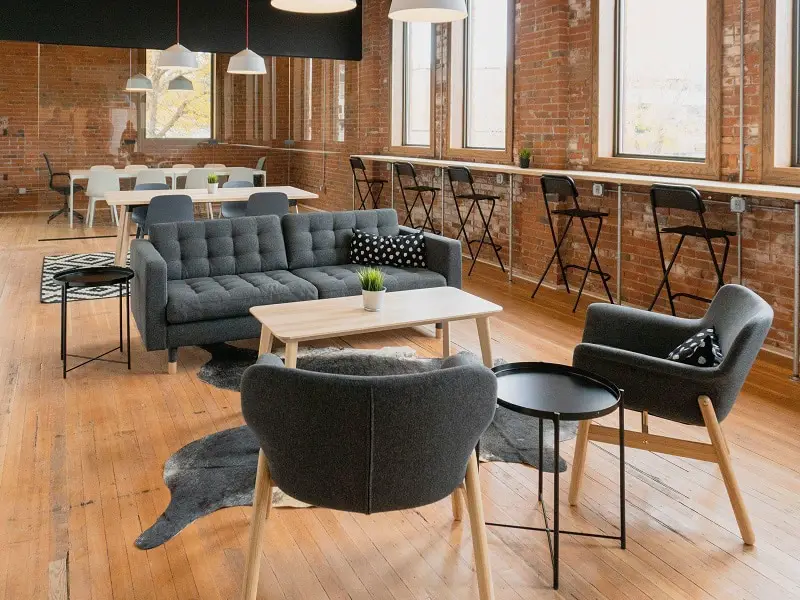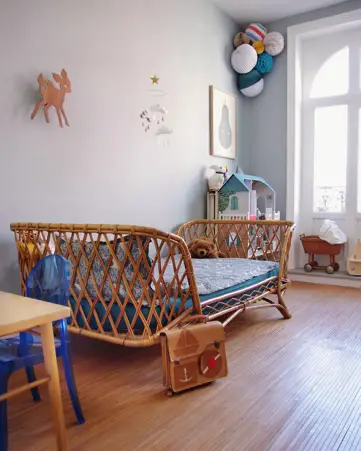Not only is it incomplete, but a room without furniture is as good as empty. A home cannot be called home without basic pieces of furniture such as tables, chairs, couches, drawer stacks, bed(s), cabinets, and so on and so forth. But with the way mother nature is crying out from the effects of global warming, it is the responsibility of everyone to go for solutions that are friendly to the environment as much as they can. Unfortunately, this means reconsidering even the furniture that we use for our homes and offices and ensuring we go for the environmentally friendly furniture options that are also sustainable. But really, what exactly do we mean by green furniture or environmentally friendly furniture? What are some of the common green furniture options on the market today? Well, there’s only one way to find out.
Here are some common types of green furniture for a sustainable living you might want to know about… but first, we define what it means when furniture is eco-friendly.
What is Green Furniture?
Environmentally friendly furniture, eco-friendly furniture, or green furniture are synonym phrases used to refer to furniture that has the least negative effects on the environment. In most cases, the furniture is created from recycled or renewable resources.
Also, minimum resources are utilized during the production of this furniture. If there are any chemicals such as gloss and paint used in finishes, they are not supposed to harm the environment.
With this in mind, let’s dive right back to the various types of green furniture, based on the materials used to create them.
Certified and Reclaimed Wood
Trees have numerous benefits to our environment. They attract rain, hold the soil together to prevent erosion, provide water catchment areas, and provide habitats for the wild. Some are even a huge source of food, especially fruits such as avocado, mangoes, and wild fruits. We can truly never exhaust these benefits. From this point of view, wood is largely one of the least environmentally-friendly materials to use for furniture. However, it is still the most convenient, beautiful, and durable. This is why wooden furniture is still produced today, despite the giant need to protect our environment.
Nonetheless, there are regulations, rules, and regulations in place to control the amount of wood used in the furniture industry and ensure its sustainability. For instance, some companies have their own man-made forest gardens from where they harvest wood such as eucalyptus, teak, and walnut. Such wood is often certified by the appropriate regulations for use in furniture and building construction as well as other commercial uses.
The other eco-friendly way to use wood for furniture construction is reclamation. Reclaimed wood often comes from used furniture, old houses, construction sites, sawmill shavings, and factory scraps, among other sources. This wood can either be modified and used as is or it can be reprocessed to make other wood products such as veneer, plywood, fiberboard, particleboard, and laminated wood, among others. As a matter of fact, reclaimed wood has become quite popular for furniture construction nowadays all around the world. It provides a really eco-friendly solution that is sustainable. What’s more, the reclaimed wood doesn’t contain chemicals that pollute the environment and furniture made from this wood can be long-lasting when constructed by professionals.
Bamboo Furniture
Contrary to what many believe, bamboo is actually a grass rather than a tree. In recent years, bamboo furniture has become quite popular, thanks to the plant’s immense environmentally friendliness. As you may notice if you check out bamboo furniture at Modern Digs, this amazing grass produces extremely beautiful pieces that come in a variety of shapes, sizes, colors, and designs. The grass grows incredibly fast, making bamboo furniture not only green, but it is also overly sustainable as well. Believe it or not, while some timber producing trees take decades to get ready for harvest, there are species of bamboo that grow up to 36 inches within just a day (24 hours). Additionally, furniture made from bamboos is extremely durable.
Recycled Metal and Plastic
Even though not so much, metals such as steel, aluminum, and iron can be used to create amazing pieces of green furniture. However, the problem with metal is that it tends to consume a lot of resources in terms of fuel and electricity before, during, and even after production, thus affecting its sustainability. On the other hand, the production of plastic comes at a cost to the environment, especially since a wide range of toxic gases are emitted into our environment during the production of plastic. Nowadays though, more and more companies are recycling plastic and metal, which leads a reduction in the number of resources used to produce finished products, while sparing our landfills from those huge piles we used to see before.
Rattan furniture
Rattan is another eco-friendly material that furniture makers are gradually embracing. Also known as manila or malacca, rattan furniture has been seen to be extremely durable, especially when woven. Rattan is also a grass or climbing plant that belongs to the plant family. It grows incredibly fast, making it a more sustainable option compared to wood.
Furniture with Non-Toxic Lacquers
In the past, you could encounter furniture with all manners of finishes. Some of the chemical substances used in these finishes were not only unnatural, but some were also potentially toxic to the environment. This is especially the case with solvent-based lacquers, some of which are known to emit volatile organic compounds that could end up polluting your home and making the air uncomfortable to breathe in for a couple of days or even weeks. These days, many manufacturers are going for water-based lacquers when it comes to furniture finishing, which is a greener and safer alternative for sustainable living.
In summary, you don’t have to put furniture that is so sophisticated in your home for it to look dazzling. There are many green furniture options that you can get at an affordable price on the market if you do your research right. Recycled metal, reprocessed/reclaimed wood, rattan, and bamboo furniture are just a few examples you can start by checking out.


